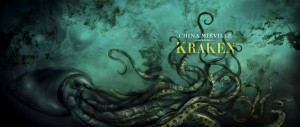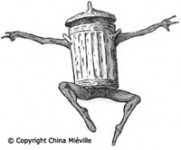I’ve once again broken the list of books I read into two posts – scientifically separated into ‘those I’ve typed up’ and ‘those I haven’t finished typing yet.’ Only 13 books read in June, and that’s including two audio books and two I did not finish. In my defense, I was on vacation for almost half that time, so I actually had a social life (but also time to read on airplanes. hmm)
Avram Davidson Treasury. I only read a few of the stories in this collection of horror stories (unsurprisingly recommended by Mr. Gaiman). Not bad, but not really my thing.
The Child that Books Built by Francis Spufford. Most definitely my thing. Spufford examines the books he read as a child – after confessing that he is a devourer of fiction and an addict. Narnia, Little House on the Prairie, most of the books he discusses are books I also loved as a child – and he looks at how they shaped and fed him as a human being and helped make him the person he is now – while never being boring once. Loved it. Need to own this one and read it all the way through in one shot, instead of reading the first half in one week and then the second half two weeks later after returning from vacation.
The Scar by China Miéville. The night before I left on a multi-city, 12-day vacation, I was horrified to discover that I had no books to take with me. And by ‘no books’, I mean only one or two that looked interesting. Unbelievable. I was so worried about making sure I didn’t get fines for overdue books while I was gone that I forgot to stock up!
And then I remembered another of the great things about living in Portland – the bookstore at the airport is POWELL’S! And knowing that, I was able to sleep peacefully. Going to the airport early, as recommended by TSA, is no hardship when you can spend that (unnecessary, in this case) time browsing a good bookstore – with practically a mandate to buy something, since you have exactly two books to cover three days of flying in your 12 day trip. The Scar is one of the two books I bought that morning (Dune being the other – no, I’ve never read it. Yes, I know they can yank my sci-fi card for that) and the one I decided would be good Portland-to-Chicago reading material. And it was. Science-Fi-Fantasy-Otherworld fiction at its finest. It was strange to find that – while I didn’t really like or dislike the main character, Bellis, I could not stop reading it. A convoluted, elaborate world – that apparently resides in a few other novels by Miéville – full of well-drawn human-people and nonhuman-people – and some very NON-human-nonhumans as well. This book rekindled a desire to read more sci-fi that I have yet to really indulge. But every time I see The Scar on the bookshelf, I want to go to the store.
Everything is Illuminated by Jonathon Saffron Foer. This is the first novel by the fabulous JSF (who I heap praise on here, and who can be heard here) which I bought at the bookstore* closest to my big Sista’s house in New Hampshire – not realizing that I’d read it before (but thankfully did not actually own. Of course, if I’d owned it, I’d likely have remembered that I read it). Not as utterly fantastic as Extremely Loud and Incredibly Close, but still crazy-good by any other standard.
This novel is the story of a girl in an old picture as imagined by JSFoer, and the story of someone, coincidentally, named JSFoer, who travels to Ukraine to do research on said girl, as told by the very-much-not-a-professional tour guide he employs while there. Amazing in its ability to fashion a beautiful story in such a strange way.
*Four books are still not enough, duh. And the Big Sista asked what we wanted to see/do, and I wanted to see and most definitely do the bookstore. It was a pretty good bookstore considering the very small population in the area. It had a big touristy focus that didn’t take away from the other sections, and even a small used-books section that I totally missed on our first trip there. (Second trip was because Little Sista had to return her broken booklight. For reals. Not my idea.)
Preludes and Nocturnes by Neil Gaiman, Sam Kieth, Mike Dringenberg and Malcolm Jones, III. In the category of ‘the strangest way in which Gaiman has materialized in my life without my seeking him’, I present the appearance of the graphic novel, Preludes and Nocturnes.
After a significantly-less-than-pleasant and not-even-close-to-timely trip from Chicago to New Hampshire, I arrived with both Sistas and one niece at Big Sista’s house at something like 4:30am (scheduled arrival: 11pmish). We were variously tired and lagged and hungry and trying to ready ourselves mentally for sleeping. I wandered into the kitchen because hungry was something I could probably remove from the list rather easily – and what do I find sitting on a side table in the hall? Preludes and Nocturnes – the first eight books of Gaiman’s Sandman series. Belonged to Big Brutha-in-Law, bought for him by a co-worker not long before that day. Trust me, at 5am it was a freaky coincidence. As a bonus, it was a book I had not read (having confused it with Endless Nights, which I had read). People wonder why I’m a little strange on the subject of Neil Gaiman.
This book is the set-up of the character and world of the Sandman (also known as Dream, Morpheus and many other names in time and space). I think I went online and reserved Absolute Sandman 1 after reading it, but it may have been before that. This books is also the reason I was cranky (here) when I finally got AS 1, because I’d read the eight of the 20 stories already and had to wait forever again for AS 2.
The Lonely Polygamist by Barry Udall. Reviewed here.
Avram Davidson Treasury – I only read a few of the stories in this collection of horror stories (unsurprisingly recommended by Mr. Gaiman). Not bad, but not really my thing.
The Child that Books Built – Francis Spufford. Most definitely my thing. Spufford goes through the books he read as achild – after confessing that he is a devourer of fiction and an addict. Narnia, Little House on the Prairie, most of the books he discusses are books I also loved as a child – and he looks at how the shaped and fed his as a human being and help make him the person he is now. Loved it. Need to wont this one and read it all th way through in one shot, instead of reading the first half in one week and then the second have 2 weeks later after returning from vacation.



